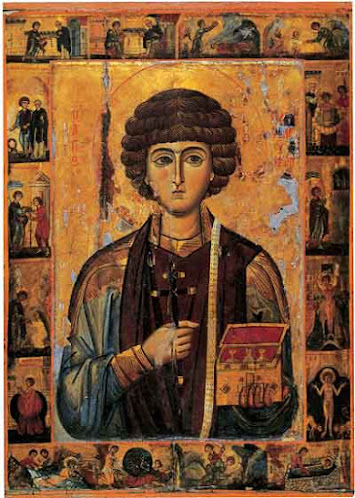Reading Notes: Saints and Animals, Part A
One story that really intrigued me from the first half of the Saints and Animals unit was that of Saint Blaise. To summarize briefly: Saint Blaise was the son of a wealthy family who, desiring to help others, went to study medicine and eventually grew to be a wise and knowledgeable healer. Saint Blaise was loved by both man and beast for his compassion and ability to help. Saint Blaise lived during a time of persecution for Christians in the Roman empire and therefore lived in seclusion in the forest. Eventually, however, the soldiers of the emperor found him and captured him. Due to his refusal to renounce his faith, Saint Blaise was sentenced to death. They thought to throw him to the wild animals but knew they would not harm him. The first attempt to kill him by drowning failed, with the water acting, for him, like a floor. Accepting his death, however, he returned to shore and allowed himself to be taken and beheaded.
The reason this story interested me is that it felt very familiar despite the fact that I was almost certain I had not read the story of Saint Blaise before. After some digging around in both my head and my childhood "Lives of the Saints" books, I discovered that the story was familiar because, while I have not read about him specifically, I have read about the group of saints to which he belongs within Eastern Orthodox Theology: the Holy Unmercenaries. Those given the title "Holy Unmercenary," such as Saint Blaise, were physicians and doctors who healed others without accepting compensation for their services. Among this group is one of my favorite saints, Saint Panteleimon, who was martyred about 10 years before Saint Blaise and has a strikingly similar story: born to a wealthy family in Turkey, Saint Panteleimon went to study medicine (where he met Saint Hermolaus and converted to Christianity), he became a great healer which drew attention to the fact that he openly professed the Christian faith. Because of this, he was taken, tortured, and refusing to renounce his faith, sentenced to death. The soldiers tried a myriad of ways to execute Saint Panteleimon, including throwing him to wild animals (they refused to attack him) and drowning (he, and the stone he was tied to, floated). Eventually, when Saint Panteleimon had finished saying his prayers (including praying for forgiveness for his tormentors) and was ready for death, he allowed himself to be beheaded.



Comments
Post a Comment